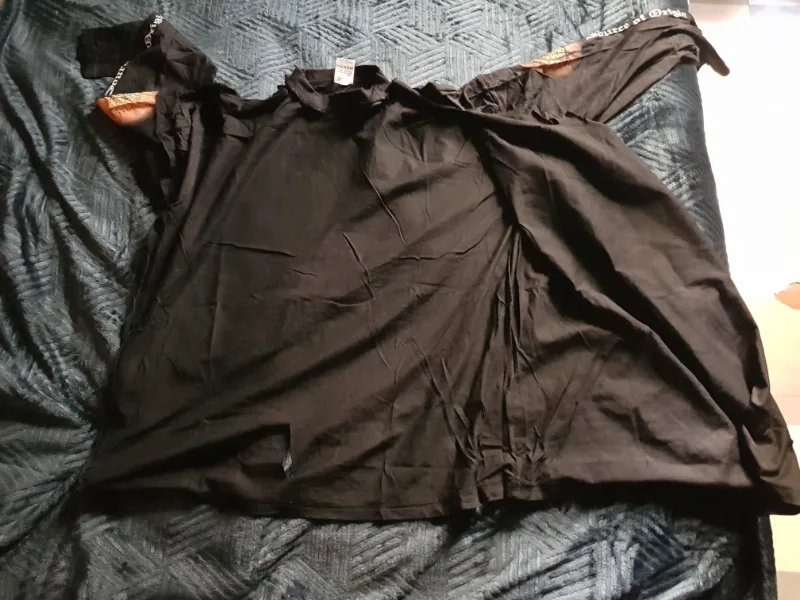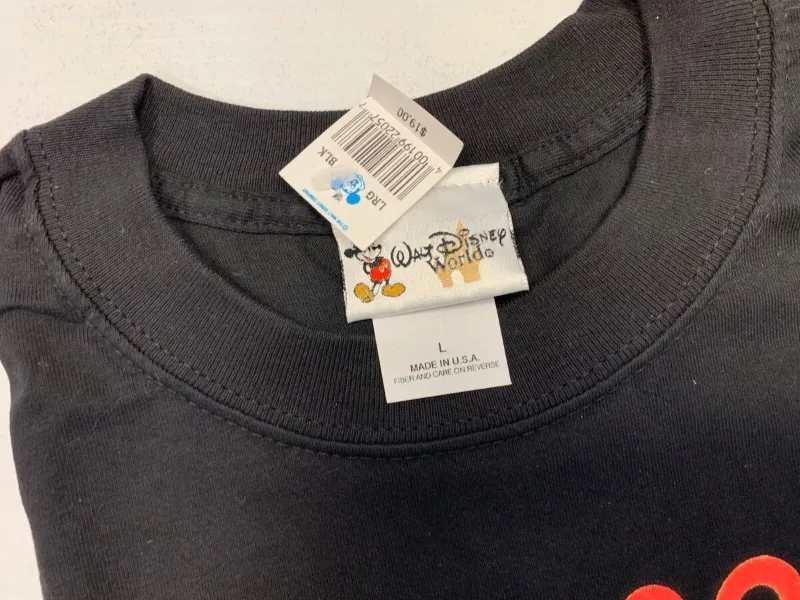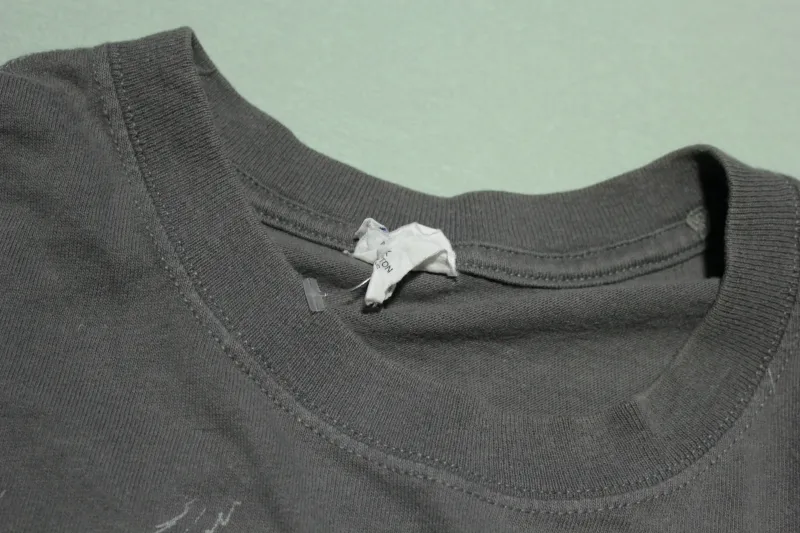No products in the cart.
Blog
Conquer Dry Rot Shirt – A Vintage Buyer’s Guide
In the world of vintage fashion, few things are as disheartening as discovering dry rot in a cherished, sought-after t-shirt. Dry rot, a relentless enemy of vintage clothing enthusiasts, can turn beloved garments into fragile relics of the past. However, fear not, for this guide is your ultimate weapon against the scourge of dry rot shirts.
Whether you’re a seasoned vintage connoisseur or just beginning your journey into the world of retro fashion, our comprehensive guide will equip you with the knowledge and strategies needed to conquer dry rot, preserve your vintage shirt collection, and continue celebrating the timeless style of yesteryears.
What Is A Dry Rot Shirt?
Dry rot in the context of a shirt refers to a specific type of deterioration that affects the fabric, making it brittle, weak, and prone to disintegration.
Unlike regular wear and tear, dry rot occurs as a result of a chemical reaction that breaks down the fibers of the fabric, leading to a distinctive deterioration pattern. Understanding the science behind dry rot can help you identify and prevent it from happening to your favorite shirts.
Dry rot is primarily caused by a chemical reaction that occurs when the cellulose fibers in the fabric interact with specific types of dyes and moisture. This chemical reaction weakens the fibers, causing them to lose their strength and flexibility.
Moisture plays a crucial role in this process, as it activates the reaction, especially in the presence of certain dyes. Additionally, improper storage conditions can exacerbate the problem, with high humidity levels and poor ventilation providing an ideal environment for the development of dry rot.

Black vintage t-shirts are particularly vulnerable to dry rot, as they often contain specific dyes that are more prone to triggering the chemical reaction.
These vintage shirts, which are highly sought after by collectors and enthusiasts, are especially susceptible due to their age and the likelihood of having been exposed to various environmental conditions over the years.
However, it’s essential to note that dry rot can potentially affect t-shirts of other colors as well, especially if they share similar dye components or have been stored in unfavorable conditions.
Why Does Dry Rot Happen?
To safeguard your vintage t-shirt collection, it’s imperative to delve into the underlying reasons behind why dry rot occurs. At the heart of this phenomenon lies the presence of sulfur, which plays a pivotal role in the degradation of t-shirt fabric. Specifically, the use of sulfur-based dyes in the manufacturing process is the primary culprit responsible for dry rot.
Sulfur-based dyes are often employed as a cost-effective alternative to more expensive fiber-reactive dyes. While these dyes serve their purpose initially, they pose a significant long-term risk to the fabric’s integrity.
Unlike fiber-reactive dyes, sulfur dyes are notably resistant to oxidation, making them particularly challenging to break down over time. As these dyes persist in the fabric, they gradually become insoluble, leading to a significant increase in the fabric’s acidity.

As the fabric’s acidity intensifies, it becomes increasingly corrosive to the cotton fibers that make up the t-shirt. This chemical transformation within the fabric is the driving force behind the deterioration that culminates in dry rot. Over time, the cotton fibers weaken and lose their structural integrity, rendering the t-shirt brittle and susceptible to disintegration.
How to Identify Dry Rot
Now that you understand what dry rot is and its underlying causes, it’s crucial to know how to identify this detrimental condition in your vintage t-shirts. Recognizing the telltale signs of dry rot can help you assess the condition of your collection and make informed purchasing decisions.
- Powdery Residue: One of the most evident signs of dry rot is the presence of a powdery residue on the fabric’s surface. If you notice a fine, chalky substance when handling your t-shirt, it’s a clear indicator of deteriorating fibers.
- Brittleness: Dry rot causes the fabric to become brittle and fragile. Gently pulling or stretching the fabric may result in tears or disintegration, particularly in areas affected by dry rot.
- Weakened Seams: Pay close attention to the seams of the t-shirt. Dry rot often weakens these areas, making them more susceptible to unraveling or tearing.
- Discoloration: Dry rot can lead to discoloration or yellowing of the fabric. Be on the lookout for unusual or uneven coloration, as it may indicate the presence of dry rot.

When examining vintage shirts before purchase, follow these practical tips to assess their condition:
- Visual Inspection: Inspect the t-shirt closely under good lighting conditions. Look for any signs of powdery residue, discoloration, or weakened seams.
- Touch Test: Feel the fabric carefully. If it feels excessively brittle or if you notice any areas that seem weak or thin, it could be a sign of dry rot.
- Smell: Although less common, dry rot can sometimes emit a musty or moldy odor. Trust your sense of smell to detect any unusual scents in the fabric.
- pH Test (Acidic Water): If you have the means, you can perform a pH test using acidic water. Dip a small portion of the fabric into slightly acidic water and observe any immediate color changes or reactions, which can be indicative of dry rot.
It’s worth noting that dry rot often begins in the hanger section of a t-shirt, where the fabric is exposed to greater amounts of sulfur from storage or manufacturing processes. If you want to test a t-shirt for dry rot without causing irreparable damage, follow these steps:
- Step1. Turn the T-Shirt Inside Out: Start by flipping the T-shirt inside out.
- Step 2. Separate the Layers: Next, carefully separate the two layers of fabric where you want to test for dry rot.
- Step 3. Gently Pull Apart: Gradually pull the two layers apart. If the fabric easily tears or disintegrates during this process, it is likely affected by dry rot.
If your vintage tee passes this test, it may be free from dry rot. However, it’s still essential to remain cautious and monitor it over time, as dry rot can develop gradually and may not always be immediately apparent.
How to Prevent Dry Rot
Preserving the condition of your vintage shirts and preventing dry rot requires proactive measures and careful attention to detail. By following these guidelines, you can extend the life of your cherished collection:
Proper Storage
Choose a storage location that is cool, dry, and well-ventilated. Avoid areas with high humidity or extreme temperature fluctuations, as these conditions can accelerate dry rot. Consider using breathable garment bags or cotton storage boxes to protect your vintage shirts.

Avoid Plastic
Never store your vintage shirts in plastic bags or containers for extended periods. Plastic can trap moisture and create a humid environment, which is conducive to the development of dry rot. Opt for breathable materials like cotton or linen instead.
Washing Instructions
Always follow the recommended washing instructions on the care label of your vintage shirts. Use a mild detergent and cold water for delicate fabrics. Avoid using excessive heat during the drying process, as high temperatures can weaken the fabric and exacerbate dry rot.
Sunlight Exposure
Prolonged exposure to direct sunlight can damage fabric fibers and accelerate dry rot. Store your vintage shirts away from direct sunlight and consider using UV-blocking curtains or blinds to protect them from harmful UV rays.
Preventative Treatments
Some fabric strengtheners or textile preservatives on the market can help reinforce the fibers of your vintage shirts and reduce the risk of dry rot.
However, use these products with caution and follow the manufacturer’s instructions. A vinegar soak, diluted with water, can also be used in moderation to help maintain the fabric’s pH balance.

Early Detection and Timely Action
Regularly inspect your vintage shirts for any signs of dry rot, such as powdery residue, brittleness, or discoloration. If you detect early symptoms, take immediate action to minimize damage. Isolate affected shirts to prevent the spread of dry rot and consult with a textile expert for restoration advice if necessary.
By adopting these preventive measures and remaining vigilant in your vintage shirt care routine, you can significantly reduce the risk of dry rot and ensure that your beloved collection remains in excellent condition for years to come.
Remember that early detection and timely action are key to preserving the integrity of your vintage shirts and minimizing the effects of dry rot.
Dealing with Dry Rot
While there is no cure for dry rot once it has taken hold of your vintage shirts, there are several options for managing the situation and preserving the memories associated with your beloved garments.
Minor Damage – Reinforcement and Stabilization
For vintage shirts with minor dry rot damage, consider reinforcement and stabilization techniques. Skilled seamstresses can mend weakened seams and incorporate discreet patches to reinforce affected areas.
This approach can extend the life of your shirts and allow you to continue enjoying them for a longer time.
Extensive Damage – Repurposing
In cases of extensive dry rot damage where traditional repairs are not feasible, repurposing your vintage shirts can be a creative solution.
Transform them into smaller items like coasters, patches, or accessories, such as headbands or scarves. This not only salvages a piece of your cherished garment but also adds a unique touch to your style.

Ethical Disposal
When dry rot damage becomes too severe to salvage or repurpose, it’s crucial to practice ethical disposal. Consider recycling or upcycling the textile material if possible.
Avoid sending vintage shirts to landfills, as textiles contribute to environmental waste and pollution. Explore local textile recycling programs or donate to organizations that specialize in repurposing textiles to minimize your environmental impact.
Mindful Consumption and Appreciation
While dry rot poses a challenge to vintage clothing preservation, it’s essential to encourage mindful consumption and appreciation of vintage clothing despite the risk.
Vintage shirts have a unique history and character that modern garments often lack. Recognize the value of these pieces not only as clothing but as a connection to the past, and approach your collection with an understanding of the inherent vulnerabilities of older fabrics.
FAQs
Can You Save A Shirt With Dry Rot?
Unfortunately, once dry rot has affected a shirt, it cannot be fully restored to its original condition. However, you can take measures to stabilize and reinforce the fabric in cases of minor damage.
Skilled seamstresses can mend seams and incorporate discreet patches to strengthen the affected areas, extending the shirt’s usability. For extensive damage, repurposing the fabric into smaller items or accessories is a creative way to salvage some value from the garment.

Does Fabric Dry Rot?
Yes, the fabric can dry rot under specific conditions. Dry rot in fabric occurs when cellulose fibers break down due to exposure to moisture, specific dyes, and other factors. This chemical deterioration weakens the fabric, making it brittle and prone to disintegration over time.
Can Dry Rot Spread Through Clothes?
Dry rot itself doesn’t spread from one garment to another. However, if clothing items are stored close to each other under conditions conducive to dry rot development (such as high humidity or poor ventilation), multiple items in the same storage area may be at risk of dry rot.
Is It OK To Wear A Damp Shirt?
It is generally not advisable to wear a damp shirt, as dampness can lead to various issues, including discomfort and skin irritation.
Wearing damp clothing can also increase the risk of fungal or bacterial growth, which may have health implications. It’s essential to ensure that your clothing is dry before wearing it to maintain comfort and hygiene.
If a shirt is damp due to rain or sweat, it’s best to allow it to air dry or use a dryer before putting it on.
Conclusion
In the quest to preserve and enjoy vintage shirts, conquering dry rot is an essential skill for any discerning collector or enthusiast. Armed with the knowledge gained from our vintage buyer’s guide, you can confidently navigate the world of vintage fashion, knowing how to identify, prevent, and manage dry rot shirts.
By taking proactive steps and appreciating the beauty of these timeless garments, you can ensure that your vintage shirt collection continues to tell its unique story and remains a cherished part of your personal style journey. Embrace the past, conquer dry rot, and let the nostalgia of vintage fashion live on.


